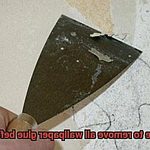Are you ready to revamp your home or office with a stunning new laminate flooring installation? If so, you might be wondering whether gluing the laminate flooring joints is necessary for a flawless and sturdy result.
Laminate flooring is an excellent choice due to its affordability, durability, and versatility in design options. However, even the slightest installation mistake can lead to costly repairs or replacements in the future. Therefore, it’s essential to understand if gluing laminate flooring joints is mandatory or simply a preference.
In this article, we’ll explore the significance of glue in laminate flooring installation and examine various methods for achieving secure joints. From tongue and groove systems to glueless click systems and glue-assisted locking systems, we’ll discuss the pros and cons of each approach.
Whether you’re a DIY enthusiast or hiring a professional installer, understanding the role of glue in laminate flooring joints is crucial for a long-lasting and visually appealing outcome. So let’s dive into this topic and unravel the truth about gluing laminate flooring joints.
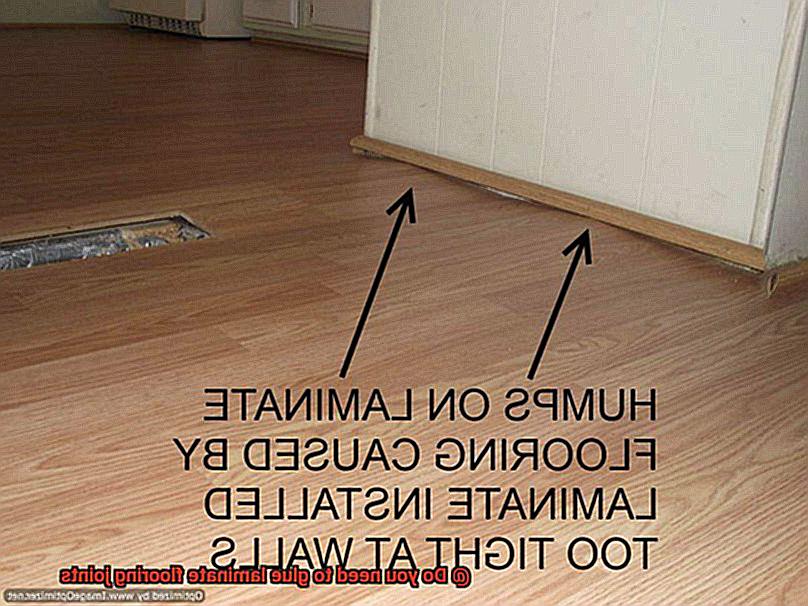
What is Laminate Flooring?
Contents
- 1 What is Laminate Flooring?
- 2 Benefits of Laminate Flooring
- 3 Do You Need to Glue Laminate Flooring Joints?
- 4 Advantages of Not Gluing Laminate Flooring Joints
- 5 Disadvantages of Not Gluing Laminate Flooring Joints
- 6 When Is It Beneficial to Glue Laminate Flooring Joints?
- 7 The Installation Process Without Glue
- 8 Tips for Installing Laminate Flooring Without Glue
- 9 Conclusion
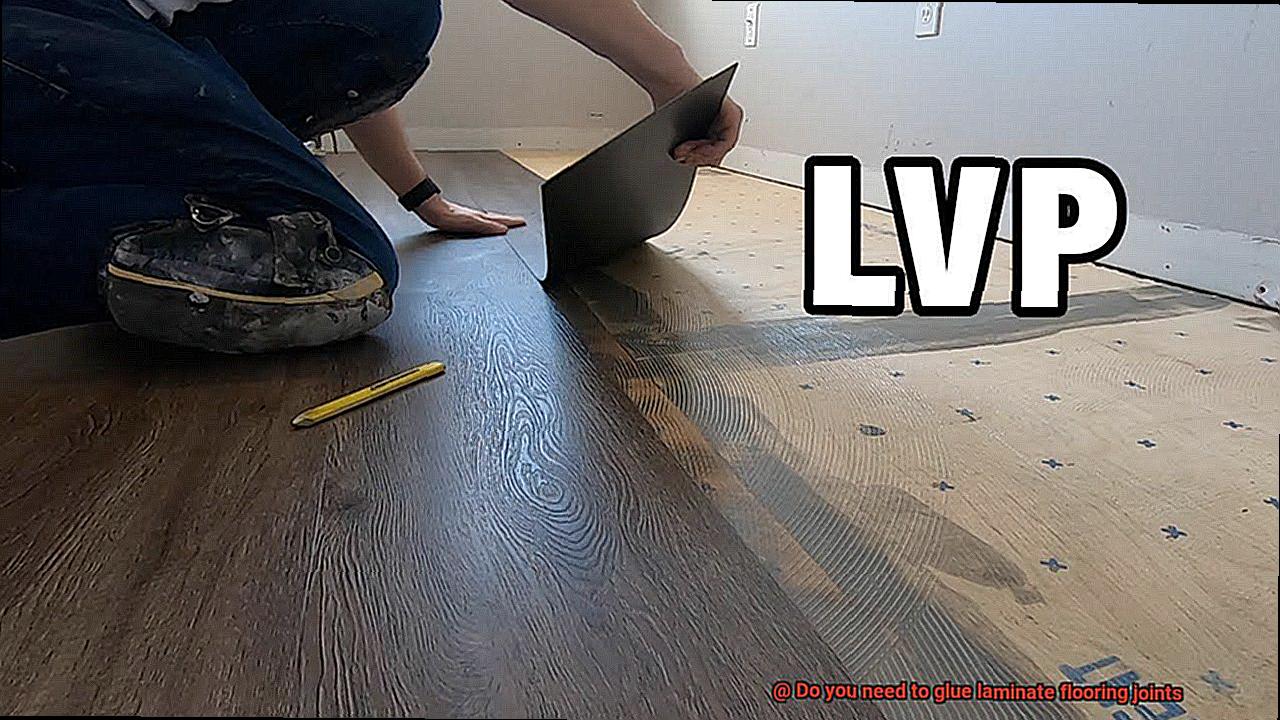
This type of flooring is constructed from multiple layers of materials that are bonded together through the process of lamination.
The top layer of laminate flooring features a photographic layer that can be designed to imitate the appearance of natural materials such as hardwood or stone. This layer is then protected by a clear wear layer that provides excellent resistance against scratches and other forms of damage.
The core layer of laminate flooring is typically made up of high-density or medium-density fiberboard, which provides stability and durability to the flooring. The bottom layer is typically a backing layer that helps to prevent moisture from seeping up from the subfloor.
One of the most significant advantages of laminate flooring is its affordability in comparison to other types of flooring options. Additionally, it is easy to install, as it typically comes in planks or tiles that can be clicked together without requiring glue or nails.
Furthermore, it’s vital to note that using glue can actually cause harm to the installation process and harm the flooring. It’s not necessary for most cases as the click-lock system is designed to create a secure and seamless installation without additional adhesives.
However, if you are installing laminate flooring in a high-traffic area or commercial space, using a small amount of glue along the edges of the planks can provide added stability and prevent gaps from forming over time.
Benefits of Laminate Flooring
As an expert on this topic, I can attest to the many benefits that make laminate flooring an excellent choice for homeowners.
Firstly, laminate flooring offers an impressive range of styles and designs that can mimic the look of expensive materials like hardwood, stone, or tile. With laminate flooring, you can achieve the aesthetic you want without sacrificing your budget or dealing with the hassle of maintenance.
But that’s not all. Laminate flooring is also incredibly durable, making it perfect for high-traffic areas or homes with pets and children. It’s resistant to scratches, stains, and fading, ensuring that your floors look great for years to come. Plus, it’s easy to clean – a quick sweep and mop is all it takes to keep your floors looking like new.
In addition to its durability, laminate flooring is designed with a moisture-resistant layer that makes it ideal for areas prone to dampness like kitchens, bathrooms, and basements. This layer prevents moisture from seeping through the surface, protecting your floors from water damage and mold growth.
Another significant advantage of laminate flooring is its easy installation process. Many laminate flooring options come with a simple click-and-lock system that allows for quick and easy installation without glue or nails. This means you can save time and money on installation costs while still achieving beautiful results.

Lastly, laminate flooring is an eco-friendly option as it’s made from recycled materials and doesn’t require harmful chemicals during installation or maintenance. Plus, its long lifespan reduces waste in landfills and the need for frequent replacements.
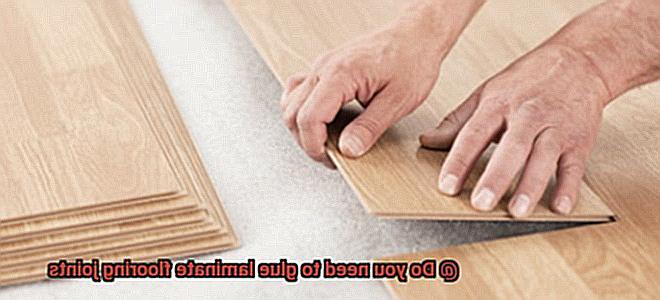
Do You Need to Glue Laminate Flooring Joints?
When it comes to installing laminate flooring, a common question that arises is whether or not to glue the joints together. As an expert in the field, I’m here to provide you with all the information you need to make an informed decision.
Firstly, let’s talk about why laminate flooring is so great. It can mimic the look of high-end materials like hardwood or stone, resist scratches and spills from pets and kids, and even hold up against moisture in damp areas. Plus, it’s incredibly easy to install without the need for glue or nails and is environmentally friendly too.
Now, back to the question of whether or not to glue laminate flooring joints together. The answer depends on a few factors.
Most laminate flooring comes in interlocking planks that snap together without the need for glue. This type of installation is called “floating,” where the flooring isn’t attached to the subfloor. However, some manufacturers recommend gluing the joints together for added stability and moisture resistance.

If you live in an area with high humidity or anticipate spills in your space, then gluing the joints may be a good idea. It’s important to use a high-quality adhesive that’s specifically designed for laminate flooring. Follow the manufacturer’s instructions carefully and use only as much glue as needed to avoid damaging the planks.
On the other hand, if you anticipate needing to replace damaged planks frequently (such as in high-traffic areas), a floating installation without glue may be a better option. Remember that gluing the joints together will make it more difficult to replace damaged planks in the future.
In summary, whether or not you choose to glue laminate flooring joints together ultimately comes down to personal preference and your specific installation circumstances. It’s always best to consult with a professional installer or follow the manufacturer’s guidelines before making a decision.
To make things easier, here’s a quick list of things to keep in mind:
- Laminate flooring typically does not require glue
- Some manufacturers recommend gluing the joints for added stability and moisture resistance
- Use a high-quality adhesive designed for laminate flooring if you choose to glue the joints together
- Only use as much glue as necessary to avoid damaging the planks
- Gluing the joints together will make it more difficult to replace damaged planks in the future
Advantages of Not Gluing Laminate Flooring Joints
Firstly, not gluing the joints can make installation a breeze. You can save time and effort by skipping the extra steps involved in gluing, which can be tedious and time-consuming. Instead, you can focus on getting your new flooring installed quickly and efficiently.
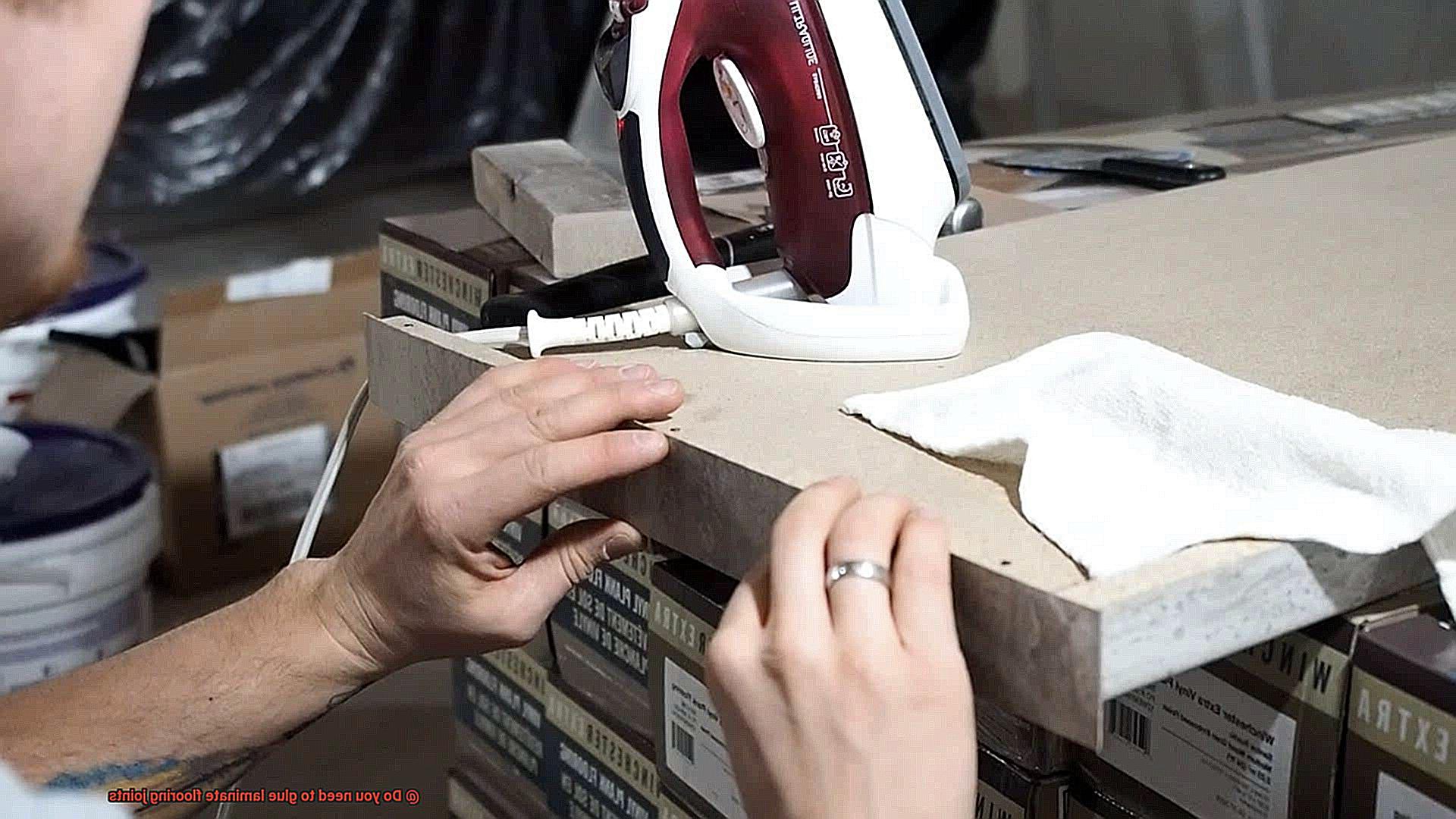
Secondly, not gluing the joints allows for easier repair and replacement of damaged planks. If a plank needs to be replaced, it can simply be removed without having to worry about removing glued joints. This can save both time and money in the long run as you won’t have to pay for professional repairs or spend hours trying to fix it yourself.
Furthermore, not gluing the joints provides more flexibility in the future. If you decide to change your flooring down the line, you can easily remove and replace the laminate without leaving behind any residue or damage from the glue. This means you can switch up your interior design without worrying about ruining your floors.
In addition, not gluing laminate flooring joints can result in a more natural look. Without glue, the planks can fit together seamlessly, creating a more cohesive and natural look. Glued joints, on the other hand, create a visible line between planks, which can be distracting from the overall appearance of the flooring.
Disadvantages of Not Gluing Laminate Flooring Joints
If you’re planning on installing laminate flooring, you may be wondering if you really need to bother with gluing the joints. While it may seem like an extra step that can be skipped, there are actually several disadvantages to not gluing your laminate flooring joints.
First and foremost, moisture damage is a major concern when it comes to laminate flooring. The material is composed of wood fibers and resin, which can be vulnerable to water damage. Without glued joints, moisture can seep in between the planks and cause swelling or warping, leading to unsightly gaps or even damage to the subfloor beneath. This can cause long-term problems that are costly and time-consuming to fix.
Another issue with not gluing your laminate flooring joints is a noisier floor. When the planks are not firmly connected, they can shift and move around more easily, creating creaking or squeaking sounds as you walk on them. Not only is this annoying, but it can also be embarrassing when guests come over.
Skipping the glue can also make installation more difficult and time-consuming. Without adhesive, it can be harder to get the planks to line up perfectly and stay in place during installation. This can result in a less professional-looking finished product that may require additional adjustments or repairs down the line. By taking the time to properly glue your laminate flooring joints, you’ll save yourself time and frustration in the long run.
When Is It Beneficial to Glue Laminate Flooring Joints?
One great feature of laminate flooring is that the planks fit together tightly, making it easy to install without the need for glue. However, there are situations where gluing the joints can be beneficial.
If you have a high-traffic area in your home, such as a hallway or living room, gluing the joints of your laminate flooring can prevent shifting and separation over time. This can save you from costly repairs and replacements down the line, and ensure that your flooring stays in place and looks great for years to come.
Moisture can also be a concern for laminate flooring. While laminate is water-resistant to some degree, excessive exposure to water can cause swelling and warping of the planks. By gluing the joints, you create a more watertight seal that helps keep moisture from seeping between the planks.
It’s important to note that some manufacturers recommend gluing laminate flooring joints as part of their installation instructions. If you’ve purchased a specific brand or type of laminate flooring, read the instructions carefully to determine if gluing is recommended.
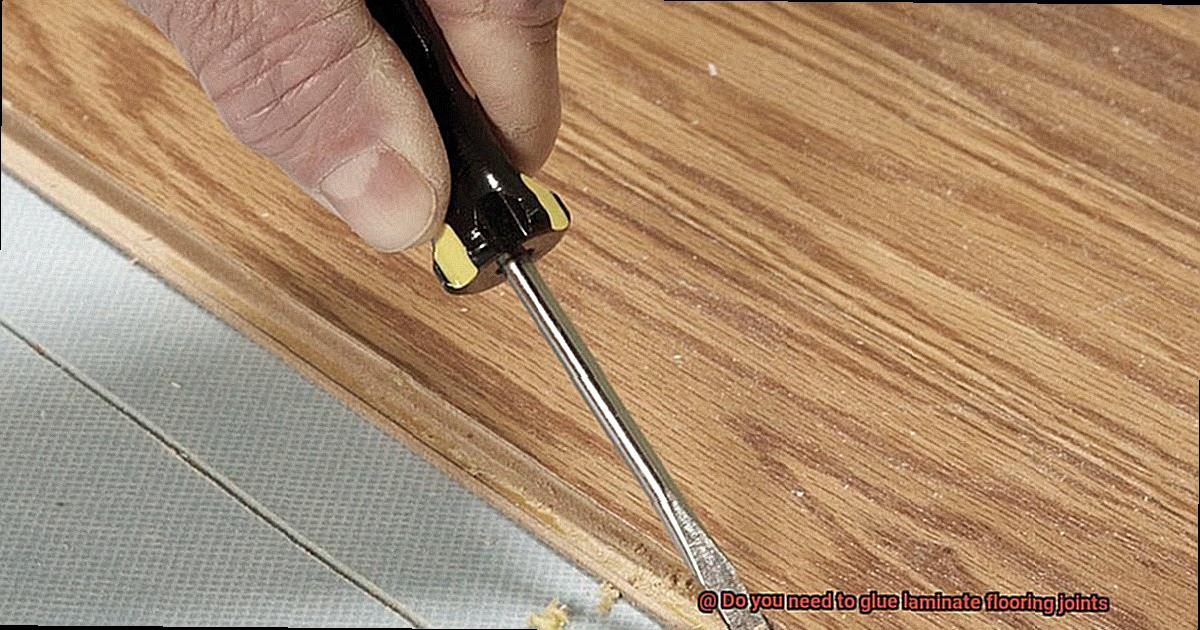
The Installation Process Without Glue
To get started, ensure that your subfloor is clean, dry, and level. A moisture barrier should be laid down to prevent any unwanted moisture from seeping up. Now it’s time to lay down those planks.
Starting in one corner of the room, work your way across in a staggered pattern. The click-and-lock system enables you to effortlessly connect the planks together without any adhesive material. Align the tongue and groove joints and click them into place. If required, use a tapping block and hammer to gently tap the planks into place.
Once all the planks are installed, trim any excess material around the edges and add a transition piece to cover any gaps between the laminate flooring and other types of flooring. Although not necessary, using some glue on the end joints is recommended for extra stability.
The benefits of installing laminate flooring without glue go beyond convenience. It also allows for easy removal and replacement of damaged planks, making it a durable and long-lasting flooring option.
To sum it up, here’s a step-by-step guide:
- Ensure subfloor is clean, dry, and level.
- Lay down moisture barrier.
- Begin installing planks in a staggered pattern.
- Connect planks together using click-and-lock system.
- Use tapping block and hammer if needed.
- Trim excess material and install transition piece.
- Optional: use glue on end joints for extra stability.

Tips for Installing Laminate Flooring Without Glue
Installing laminate flooring without glue can be a great DIY project that saves you time and money. However, a successful installation requires careful attention to detail. To ensure a smooth and durable outcome, here are some tips and tricks for installing laminate flooring without glue.
Prep the Subfloor
Before installing your laminate flooring, make sure the subfloor is clean and level. Any debris or bumps can cause issues with the planks fitting together properly. Take the time to thoroughly sweep and clean the subfloor before beginning installation. Use a leveling compound if necessary to create a smooth surface.
Use Underlayment
Installing an underlayment between the subfloor and the laminate planks can provide numerous benefits. It can help with soundproofing, provide a moisture barrier, and cushion any minor imperfections in the subfloor. Choose an underlayment that is appropriate for your specific needs and follow the manufacturer’s instructions carefully.
Choose Quality Product
Not all laminate flooring products are created equal. When purchasing laminate flooring, choose a quality product that has a locking system designed to hold the planks together without the need for glue. Cheap or poorly made products may not hold up over time, leading to buckling or shifting of the planks.
Follow Manufacturer Instructions
Each laminate flooring product may have slightly different installation instructions, so it’s crucial to follow the manufacturer’s instructions carefully. This will ensure a successful installation and prevent any damage to the flooring. Don’t skip any steps or take shortcuts – taking the time to do it right will pay off in the long run.
Use Spacers
Laminate flooring can expand and contract with changes in temperature and humidity, so it’s important to leave enough room around the edges of the room (usually around 1/4 inch) to allow for this movement. Use spacers around the perimeter of the room to create an even gap between the flooring and the walls or other fixed objects.
Conclusion
In conclusion, laminate flooring is a top choice for those seeking an affordable, durable, and versatile flooring option. While gluing the joints of laminate flooring is not always necessary, it can add extra stability and moisture resistance to your installation. Ultimately, the decision to glue or not to glue hinges on personal preference and specific installation circumstances.
Opting not to glue your laminate flooring joints has its advantages. It can make installation easier, facilitate repair and replacement of damaged planks, provide more flexibility in the future, and result in a more natural look. However, there are also downsides to consider such as increased risk of moisture damage and a noisier floor.
If you choose to install laminate flooring without glue, ensure that you properly prep the subfloor, use underlayment, select quality products with a locking system designed for glue-free installation, follow manufacturer instructions carefully, and use spacers around the perimeter of the room.
By understanding the role of glue in laminate flooring joints, you can achieve a visually appealing and long-lasting outcome.


